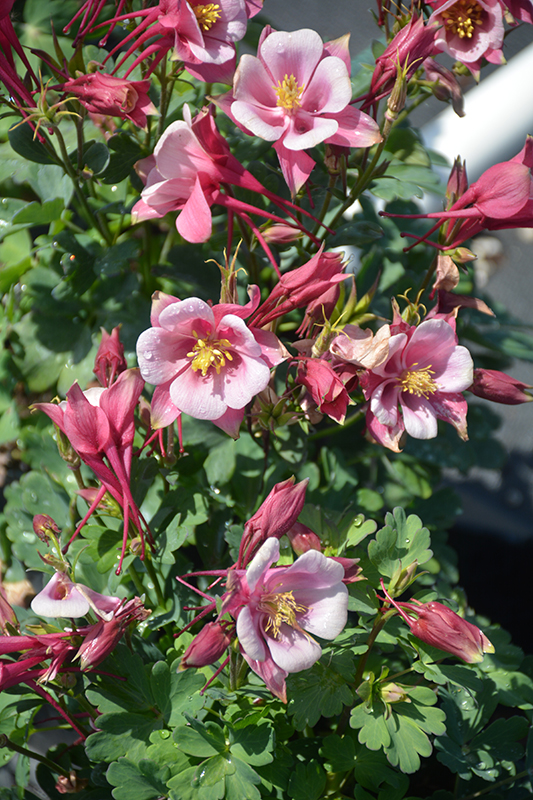VANDERMEER
PLANT LIBRARY
Find the perfect plant for your space by browsing through this extensive selection that we typically carry every year.
This library is for information purposes only.
Kirigami™ Rose and Pink Columbine
Aquilegia caerulea 'Kirigami Rose and Pink'
Height: 24 inches
Spread: 20 inches
Sunlight:
![]()
![]()
Hardiness Zone: 4a
Other Names: Wild Columbine, Granny's Bonnet
Brand: Syngenta Flowers
Description:
Showy, upward facing rose and pink flowers, featuring white cups and long, graceful spurs rise above bushy, deep cut foliage; a great long lasting cutflower; good for naturalizing partially shaded areas, and is also deer resistant
Ornamental Features
Kirigami™ Rose and Pink Columbine features bold nodding pink bell-shaped flowers with white overtones, yellow eyes and rose spurs at the ends of the stems from late spring to early summer. The flowers are excellent for cutting. Its deeply cut ferny compound leaves remain green in colour throughout the season.
Landscape Attributes
Kirigami™ Rose and Pink Columbine is an herbaceous perennial with an upright spreading habit of growth. Its relatively fine texture sets it apart from other garden plants with less refined foliage.
This is a relatively low maintenance plant, and should be cut back in late fall in preparation for winter. It is a good choice for attracting bees and butterflies to your yard, but is not particularly attractive to deer who tend to leave it alone in favor of tastier treats. Gardeners should be aware of the following characteristic(s) that may warrant special consideration;
- Insects
Kirigami™ Rose and Pink Columbine is recommended for the following landscape applications;
- Mass Planting
- Rock/Alpine Gardens
- Border Edging
- General Garden Use
- Groundcover
- Naturalizing And Woodland Gardens
Planting & Growing
Kirigami™ Rose and Pink Columbine will grow to be about 20 inches tall at maturity, with a spread of 20 inches. Its foliage tends to remain dense right to the ground, not requiring facer plants in front. It grows at a medium rate, and under ideal conditions can be expected to live for approximately 6 years. As an herbaceous perennial, this plant will usually die back to the crown each winter, and will regrow from the base each spring. Be careful not to disturb the crown in late winter when it may not be readily seen! As this plant tends to go dormant in summer, it is best interplanted with late-season bloomers to hide the dying foliage.
This plant does best in full sun to partial shade. It does best in average to evenly moist conditions, but will not tolerate standing water. It is not particular as to soil type or pH. It is somewhat tolerant of urban pollution. This is a selected variety of a species not originally from North America.





